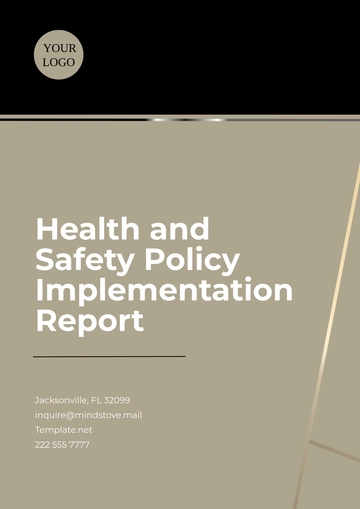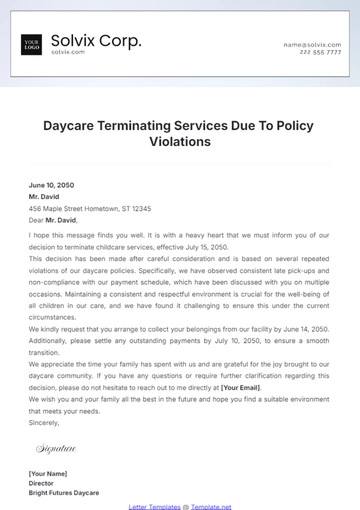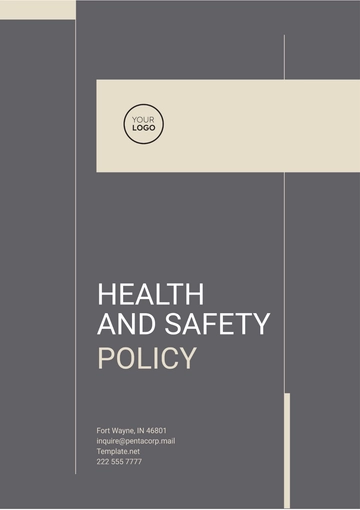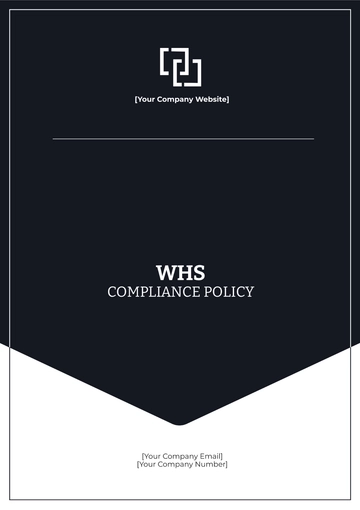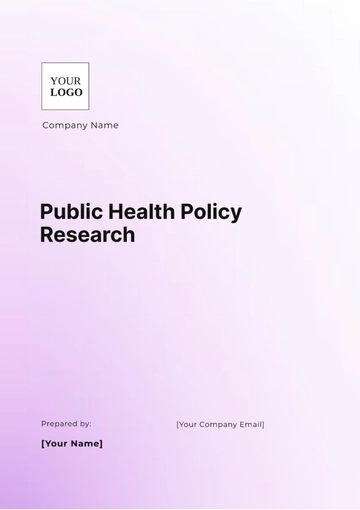Free Nursing Home Environmental Sustainability Policy
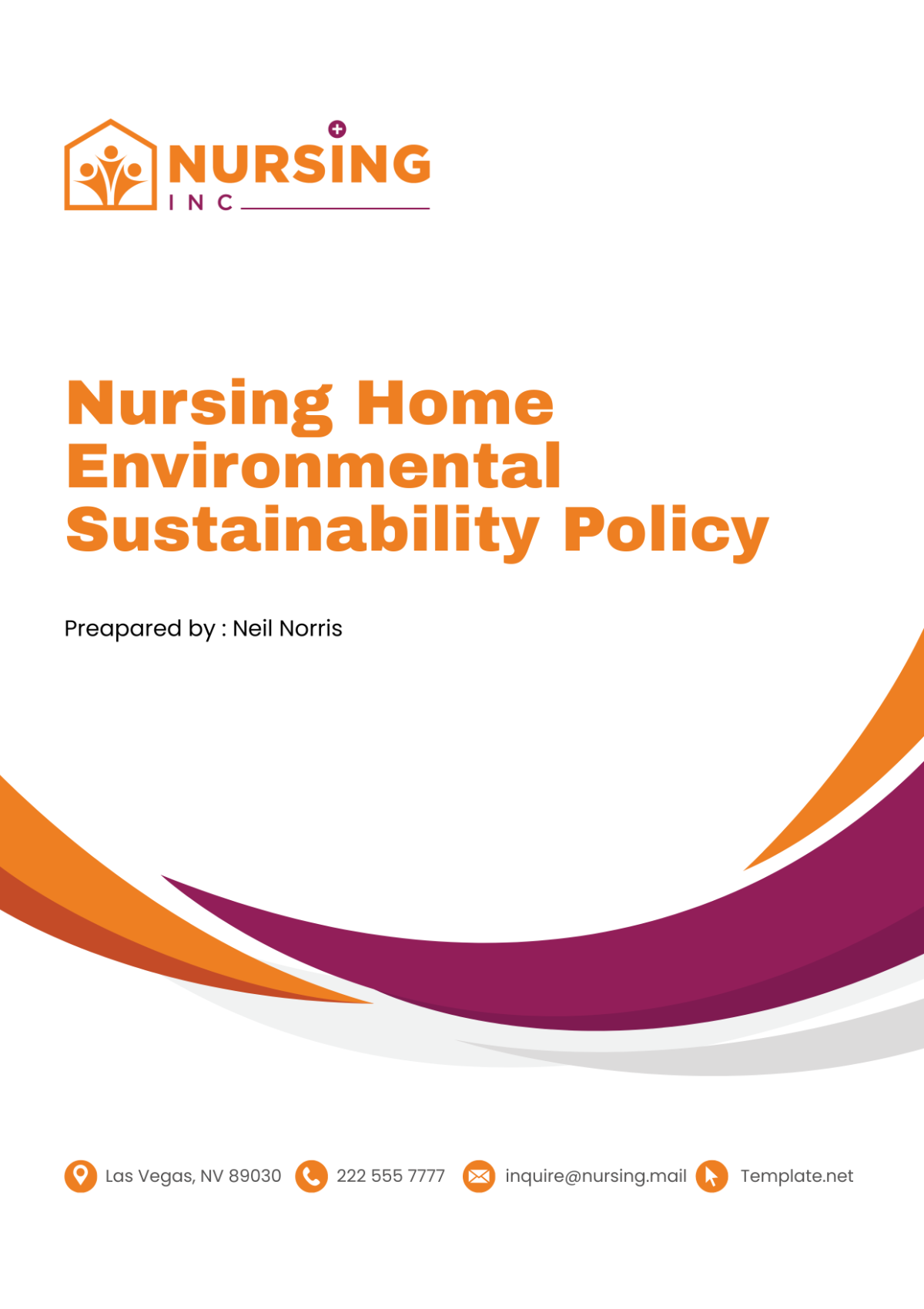
I. Statement of Commitment
At [Your Company Name], we are dedicated to providing exceptional care to our residents while also being stewards of the environment. We recognize the importance of minimizing our ecological footprint and promoting sustainability in all aspects of our operations.
II. Objectives and Goals
Our objectives and goals for environmental sustainability include:
Reducing energy consumption by 10% compared to the previous year.
Implementing a comprehensive recycling program to divert at least 50% of waste from landfills.
Conserving water through the installation of water-saving fixtures and promoting resident education on water conservation.
Procuring environmentally friendly products and materials whenever possible.
Providing ongoing staff training and engagement on environmental sustainability practices.
III. Compliance with Regulations
[Your Company Name] adheres to all relevant environmental regulations and standards set forth by local, state, and federal authorities. We maintain thorough documentation of our compliance efforts to ensure transparency and accountability.
Local Regulations: We closely follow regulations established by local authorities, including zoning laws, waste management regulations, and environmental protection ordinances. By staying informed about local requirements, we ensure that our facility operates in harmony with our surrounding community.
State Regulations: [Your Company Name] complies with state-level environmental regulations, which may include air quality standards, water management requirements, and hazardous waste disposal regulations. We maintain comprehensive records and documentation to demonstrate our compliance with state mandates.
Federal Regulations: In addition to local and state regulations, we adhere to federal environmental laws and standards set forth by agencies such as the Environmental Protection Agency (EPA) and the Occupational Safety and Health Administration (OSHA). These regulations cover a wide range of environmental aspects, including air and water quality, waste management, and workplace safety.
IV. Resource Management
At [Your Company Name], we prioritize efficient resource management to minimize our environmental impact and promote sustainability. Our comprehensive approach encompasses various aspects of resource utilization, including energy, water, and materials.
Energy Efficiency: We implement energy-saving measures throughout our facility to reduce energy consumption and lower our carbon footprint. This includes the use of energy-efficient lighting, such as LED bulbs, and the installation of programmable thermostats to optimize heating and cooling systems. Additionally, we conduct regular energy audits to identify areas for improvement and invest in energy-efficient appliances and equipment.
Renewable Energy: [Your Company Name] explores opportunities to incorporate renewable energy sources into our operations. This may include the installation of solar panels or the purchase of renewable energy credits to offset our electricity usage. By transitioning to renewable energy sources, we reduce reliance on fossil fuels and support the transition to a cleaner, more sustainable energy future.
Water Conservation: We are committed to conserving water through the implementation of water-saving practices and technologies. This includes the installation of low-flow faucets and toilets, as well as the use of water-efficient landscaping techniques. We also conduct regular inspections to identify and repair leaks, minimizing water waste and promoting responsible water usage among residents and staff.
Materials Management: [Your Company Name] focuses on reducing waste and promoting recycling and reuse initiatives. We prioritize the procurement of durable, long-lasting materials and products to minimize waste generation. Additionally, we implement recycling programs for materials such as paper, plastic, glass, and metal, diverting these resources from landfills. We also explore opportunities for composting organic waste from our kitchen and landscaping activities, further reducing our environmental footprint.
Waste Reduction: In addition to recycling efforts, we actively work to reduce waste generation across our facility. This includes initiatives such as source reduction, where we seek to minimize packaging waste and single-use items. We also encourage residents and staff to participate in waste reduction efforts through education and engagement initiatives.
Monitoring and Optimization: [Your Company Name] employs a systematic approach to monitor and optimize our resource management efforts. We track key performance indicators related to energy and water usage, waste generation, and recycling rates. This data allows us to identify trends, track progress towards sustainability goals, and implement targeted interventions for continuous improvement.
V. Waste Management
Waste management at [Your Company Name] is a multifaceted approach aimed at minimizing waste generation, maximizing recycling efforts, and promoting responsible disposal practices. Our comprehensive waste management program encompasses various strategies to reduce our environmental footprint and contribute to a more sustainable future.
Source Reduction: We prioritize source reduction initiatives to minimize the amount of waste generated within our facility. This includes measures such as purchasing products with minimal packaging, avoiding single-use items whenever possible, and encouraging residents and staff to practice waste reduction in their daily activities.
Recycling Programs: [Your Company Name] operates robust recycling programs to divert recyclable materials from landfills and promote resource conservation. We provide separate bins for paper, plastic, glass, and metal throughout our facility, making it easy for residents and staff to recycle effectively. Additionally, we educate our community about the importance of recycling and provide guidance on proper sorting and disposal practices.
Composting: We recognize the value of organic waste as a resource and actively promote composting initiatives at our facility. Organic waste from our kitchen and landscaping activities is collected and composted, producing nutrient-rich compost that can be used to enrich soil and support plant growth. Composting not only reduces waste sent to landfills but also contributes to soil health and promotes sustainable agriculture practices.
Hazardous Waste Management: [Your Company Name] follows strict protocols for the proper management and disposal of hazardous waste materials. We adhere to all applicable regulations governing the handling, storage, and disposal of hazardous substances to ensure the safety of our residents, staff, and the environment. Our staff receives specialized training on hazardous waste management procedures to mitigate risks and prevent environmental contamination.
Waste Audits and Monitoring: We conduct regular waste audits and monitoring activities to assess our waste management performance and identify opportunities for improvement. These audits help us track waste generation trends, measure recycling rates, and identify areas where additional interventions may be needed. By collecting and analyzing data on waste streams, we can make informed decisions to optimize our waste management practices and minimize our environmental impact.
VI. Green Procurement
We recognize the significant impact that procurement practices can have on environmental sustainability. Our green procurement initiatives prioritize the sourcing of environmentally friendly products and materials, promoting responsible consumption and supporting sustainable supply chains. Our comprehensive approach to green procurement encompasses various strategies to minimize environmental impact and promote sustainable practices throughout our procurement process.
Sustainable Product Selection: [Your Company Name] actively seeks out products and materials that meet high environmental standards and certifications. We prioritize products with third-party certifications such as Energy Star, EcoLogo, and Forest Stewardship Council (FSC) certification, which verify environmental performance and responsible sourcing practices. By selecting sustainable products, we reduce our carbon footprint, minimize resource depletion, and support eco-friendly manufacturing practices.
Recycled and Recyclable Materials: We prioritize the procurement of products made from recycled materials and materials that are recyclable at the end of their lifecycle. This includes paper products with high post-consumer recycled content, recycled plastic and glass containers, and packaging materials that are easily recyclable. By choosing recycled and recyclable materials, we help close the loop on resource use, reduce waste, and support the circular economy.
Energy-Efficient Appliances and Equipment: [Your Company Name] invests in energy-efficient appliances and equipment for use within our facility. We prioritize the purchase of Energy Star certified appliances, which meet stringent energy efficiency criteria set by the Environmental Protection Agency (EPA). By using energy-efficient appliances, we reduce energy consumption, lower utility costs, and decrease greenhouse gas emissions.
Non-Toxic and Eco-Friendly Cleaning Supplies: We prioritize the procurement of non-toxic and eco-friendly cleaning supplies to maintain a healthy indoor environment for our residents and staff. Our cleaning products are free from harmful chemicals such as chlorine, phthalates, and volatile organic compounds (VOCs), reducing the risk of exposure to hazardous substances. Additionally, we choose cleaning supplies that are biodegradable and environmentally friendly, minimizing their impact on aquatic ecosystems and water quality.
Supplier Engagement and Collaboration: [Your Company Name] collaborates with suppliers who share our commitment to environmental sustainability. We work closely with our suppliers to understand their sustainability practices, assess the environmental impact of their products, and identify opportunities for improvement. By engaging with suppliers as partners in sustainability, we encourage transparency, accountability, and continuous improvement throughout our supply chain.
Life Cycle Analysis and Environmental Impact Assessment: Before making procurement decisions, [Your Company Name] conducts life cycle assessments and environmental impact evaluations to understand the full environmental footprint of products and materials. We consider factors such as raw material sourcing, manufacturing processes, transportation emissions, and end-of-life disposal to make informed decisions that minimize environmental impact across the product lifecycle.
VII. Staff Training and Engagement
We recognize that our staff plays a crucial role in advancing our environmental sustainability goals. We are committed to providing comprehensive training and fostering active engagement among our team members to promote awareness, instill best practices, and empower everyone to contribute to our sustainability initiatives effectively.
Environmental Awareness Training: We provide ongoing training sessions to educate our staff about environmental sustainability principles, practices, and the importance of their role in our sustainability efforts. These training sessions cover topics such as energy conservation, waste reduction, water conservation, and the importance of green procurement. By increasing environmental awareness among our staff, we empower them to make informed decisions and take actions that contribute to our sustainability goals.
Best Practices Implementation: Through training sessions and workshops, we equip our staff with the knowledge and skills necessary to implement best practices for environmental sustainability in their daily activities. This includes guidance on energy-saving techniques, waste reduction strategies, recycling protocols, and proper disposal of hazardous materials. By providing clear guidelines and resources, we ensure that our staff can effectively integrate sustainability practices into their work routines.
Engagement and Participation: We actively encourage staff engagement and participation in our sustainability initiatives through regular communication, feedback channels, and recognition programs. We foster a culture of collaboration and empowerment, where staff members are encouraged to share ideas, suggestions, and feedback related to environmental sustainability. By involving our staff in decision-making processes and recognizing their contributions, we create a sense of ownership and pride in our sustainability efforts.
Training Resources and Materials: [Your Company Name] provides staff with access to training resources, materials, and tools to support their ongoing learning and development in environmental sustainability. This may include educational materials, online courses, workshops, and reference guides on relevant topics. By investing in staff training and development, we ensure that our team members have the knowledge and skills they need to effectively contribute to our sustainability objectives.
Continuous Learning and Improvement: We emphasize the importance of continuous learning and improvement in environmental sustainability. We regularly update our training materials and programs to reflect new developments, best practices, and emerging trends in sustainability. Additionally, we encourage staff members to seek out opportunities for further education and professional development in environmental sustainability through external resources and training programs.
Leadership and Role Modeling: [Your Company Name] leadership team leads by example and serves as role models for environmental sustainability practices. Leaders demonstrate their commitment to sustainability through their actions, decisions, and behaviors, inspiring staff members to follow suit. By setting a positive example and championing sustainability initiatives, leaders create a culture of accountability and commitment to environmental stewardship throughout the organization.
VIII. Community Involvement
Community involvement is a cornerstone of [Your Company Name]'s commitment to environmental sustainability. We recognize that collaboration with our local community is essential for driving meaningful change and creating a more sustainable future for all. Our community involvement initiatives aim to engage residents, stakeholders, and organizations in collective efforts to address environmental challenges and promote sustainable practices.
Community Partnerships: [Your Company Name] actively seeks partnerships with local community organizations, environmental groups, and government agencies to collaborate on sustainability initiatives. We participate in collaborative projects, joint campaigns, and community events focused on environmental conservation, waste reduction, and renewable energy adoption. By working together with our community partners, we leverage collective resources, expertise, and networks to maximize our impact and achieve shared sustainability goals.
Educational Outreach: We prioritize educational outreach efforts to raise awareness about environmental issues and promote sustainable behaviors within our community. We organize workshops, seminars, and educational sessions on topics such as energy efficiency, waste management, water conservation, and sustainable living practices. These educational initiatives provide residents with practical knowledge and actionable tips to reduce their environmental footprint and make sustainable choices in their daily lives.
Community Clean-Up Events: [Your Company Name] actively participates in community clean-up events, litter pick-ups, and beautification projects to improve the environmental quality of our local area. We organize volunteer opportunities for residents, staff, and community members to come together and make a positive impact on the environment. These events not only help to beautify our community but also foster a sense of pride, camaraderie, and environmental stewardship among participants.
Green Spaces and Urban Greening: We support efforts to create and maintain green spaces, parks, and urban green infrastructure within our community. [Your Company Name] collaborates with local authorities, community groups, and environmental organizations to plant trees, establish community gardens, and enhance public spaces with greenery. These initiatives contribute to biodiversity conservation, improve air quality, and create natural habitats for wildlife, enhancing the overall quality of life for residents.
Environmental Advocacy and Policy Support: [Your Company Name] advocates for environmentally responsible policies and practices at the local, regional, and national levels. We engage with policymakers, advocate for sustainable policies, and support initiatives that promote renewable energy, climate resilience, and environmental justice. By lending our voice and expertise to environmental advocacy efforts, we work to influence positive change and create a policy environment that supports sustainability and environmental protection.
Youth Engagement and Education: We prioritize engaging and empowering the next generation of environmental leaders through youth education and outreach programs. [Your Company Name] partners with schools, youth organizations, and educational institutions to deliver environmental education programs, sustainability curriculum, and hands-on learning experiences for young people. These initiatives inspire and empower youth to become environmental stewards, advocates, and change-makers in their communities.
IX. Conclusion
In conclusion, [Your Company Name] is deeply committed to environmental sustainability and recognizes the critical role that community involvement plays in achieving our sustainability goals. Through comprehensive initiatives focused on staff training and engagement, green procurement, waste management, and resource conservation, we strive to minimize our environmental footprint and promote responsible practices throughout our operations.
This annual facility report reflects [Your Company Name]'s ongoing commitment to environmental sustainability and our dedication to providing exceptional care to our residents. We will continue to prioritize sustainability in all aspects of our operations and strive for continuous improvement in the years to come.
- 100% Customizable, free editor
- Access 1 Million+ Templates, photo’s & graphics
- Download or share as a template
- Click and replace photos, graphics, text, backgrounds
- Resize, crop, AI write & more
- Access advanced editor
Promote environmental sustainability in nursing homes with Template.net's Nursing Home Environmental Sustainability Policy Template. Easily editable in our AI Editor Tool, this customizable and user-friendly template provides a structured format for outlining the facility's commitment to sustainable practices, including energy conservation, waste reduction, recycling initiatives, and environmentally friendly purchasing policies.
You may also like
- HR Policy
- Restaurant Policy
- Company Policy
- Accounting Policies and Procedures
- Website Policy
- Privacy Policy
- Safety Policy
- School Policy
- IT and Software Policy
- Law Firm Policy
- Construction Policy
- Interior Design Policy
- Travel Agency Policy
- Education Academic Policy
- Security Policy
- Real Estate Policy
- Expense Policy
- Software Policy



